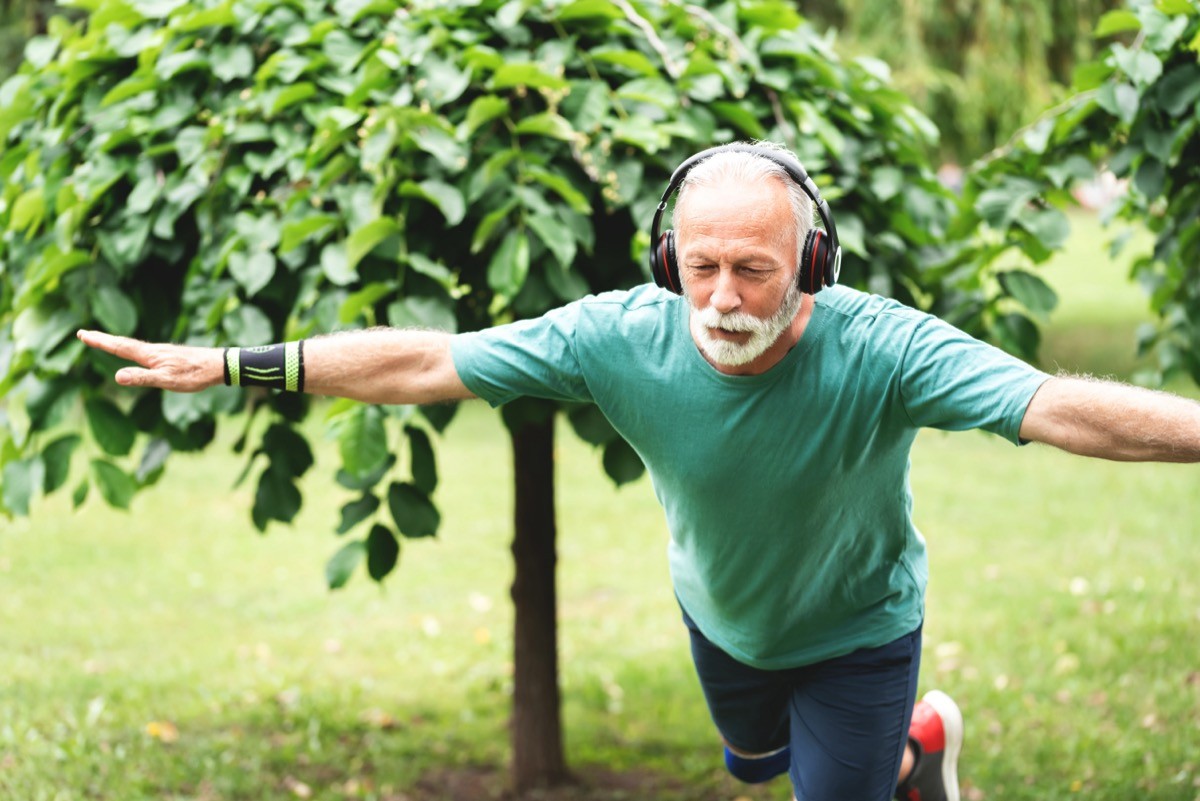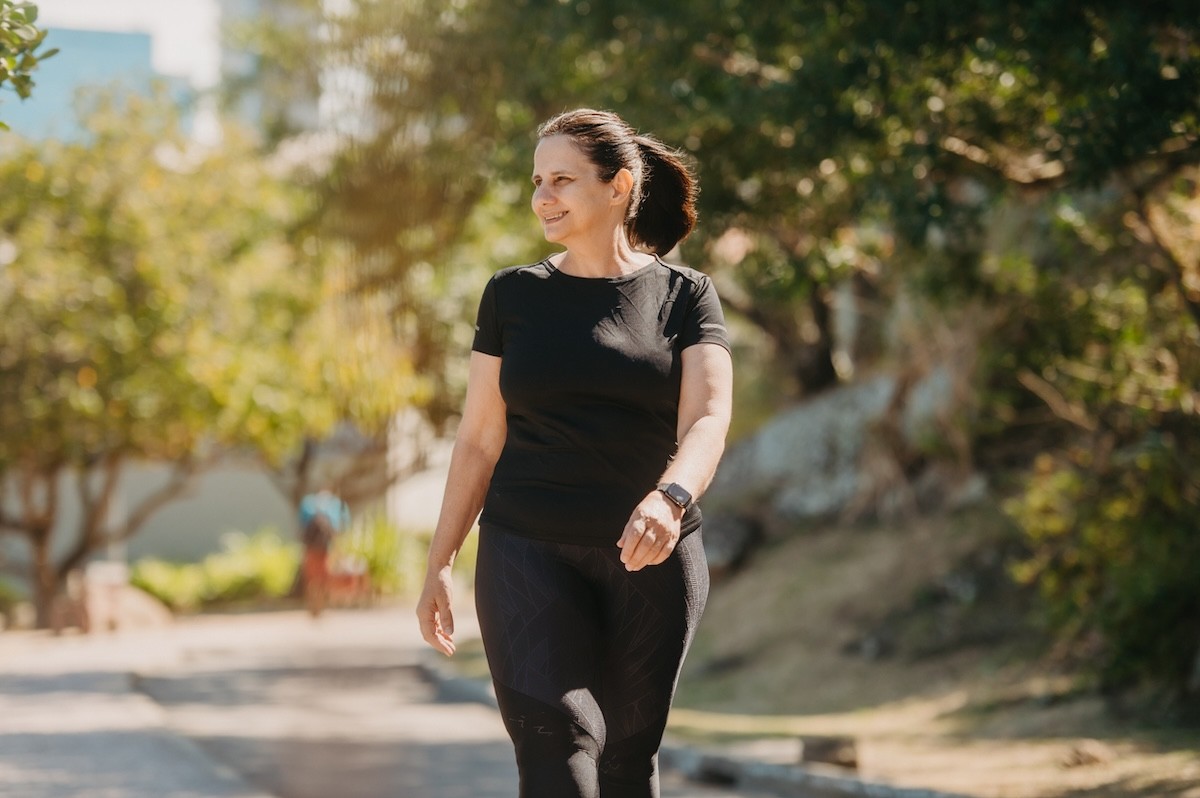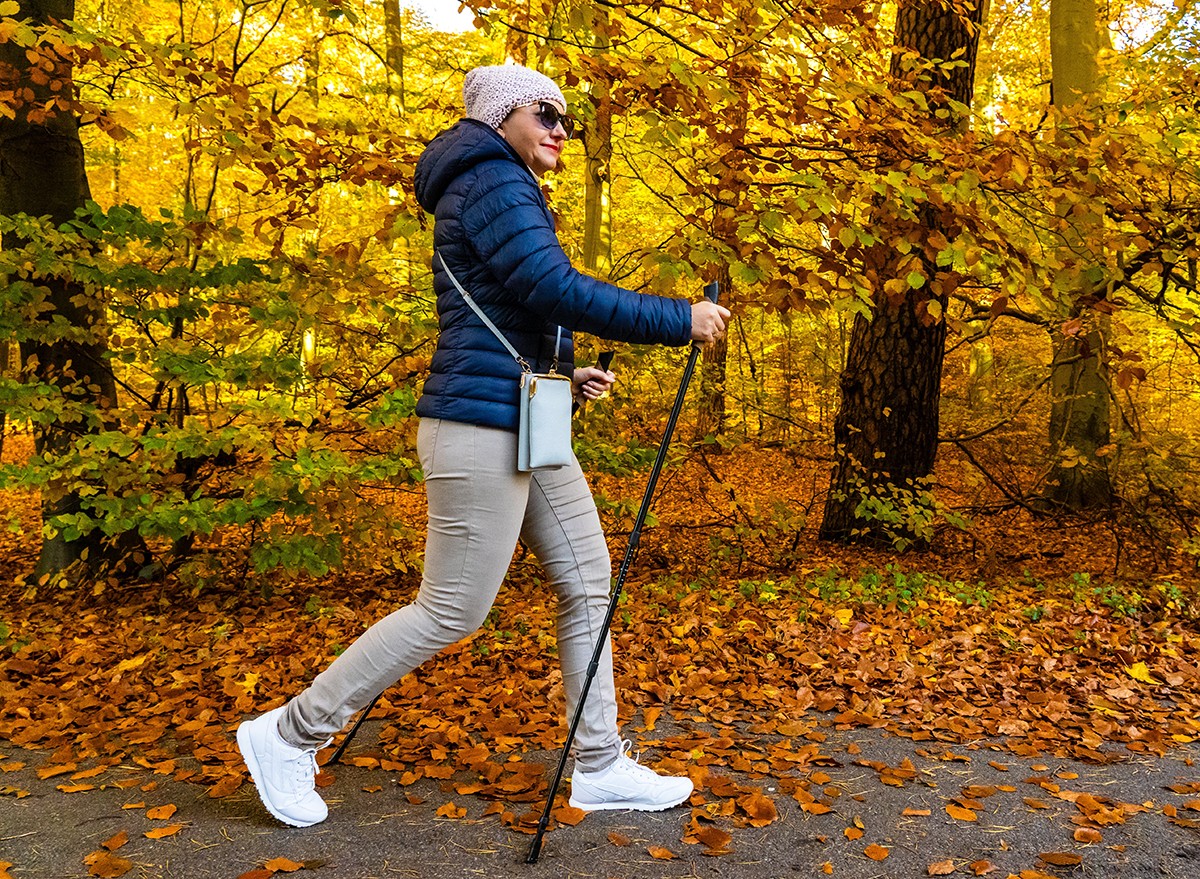25 Ways a Daily Afternoon Walk Can Transform Your Life

Walking is one of the most accessible, versatile methods of exercise, offering a myriad of benefits for mind and body. While taking a walk at any time of day is beneficial, embarking on an afternoon stroll has specific and notable advantages for your heart, lungs, brain, and longevity.
In fact, a daily afternoon walk can be your secret weapon for improving your overall health and living your best life.
This is the time of day when your body is operating at its peak with optimal muscle function, strength, energy, and endurance, say experts at the Mayo Clinic. Add the fact that walking is simple, low-impact, and gentle cardio exercise, and a daily afternoon walk becomes a no-brainer.
Here are all the amazing benefits of taking a daily afternoon walk, plus how to get the most from the activity for your mind, body, and overall wellness.
RELATED: How to Walk 10,000 Steps a Day Without Leaving the House
How to Take the Healthiest Daily Afternoon Walks, According to Experts:
To make your afternoon walk a habit, schedule it like any other important appointment, Dr. McDonough advises, “Add your walk to your calendar, just as you do with other appointments. There will be days when you may need to adjust your walking schedule, but keep it as consistent as possible.”
- How long should my afternoon walk be? Even a 15-minute walk can make a difference, especially after meals. But aim for at least 30 minutes for maximum benefits.
- Is it better to walk in the morning or afternoon? Both are good, but afternoon walks have been shown to be particularly effective for heart health and energy levels.
- Can walking help with weight loss? Yes! Brisk walking burns calories and fat, contributing to weight management.
- What if I can’t walk outside? Walking indoors on a treadmill or in a large indoor space is still beneficial.
- How many steps should my daily walk be? Tracking your steps can help you set new goals and serve as a source of inspiration, according to the Mayo Clinic. While its commonly cited to get at least 10,000 steps a day, a recent study showed that even walking just 4,000 steps is incredibly beneficial.
Now that you know how to do it, it’s time to lace up those sneakers, step outside, and discover the amazing benefits of this simple yet powerful practice.
25 Amazing Benefits of a Daily Afternoon Walk
1
It improves your brain health.

Researchers found that the pressure of each step’s impact sends waves through the arteries that can significantly increase blood supply to the brain—suggesting that walking may improve cognitive performance and boost well-being.
2
It helps slow memory loss.

For the study, adults with Alzheimer’s disease or mild cognitive impairment took four 30-minute walks a week. By the time three months had passed, they were better at remembering groups of words. Plus, those with mild cognitive impairments showed improvements in parts of their brains associated with memory loss.
3
It boosts your happiness and lowers depression.

“Walking releases endorphins which are natural mood lifters,” adds Garcia. “They can promote relaxation and alleviate anxiety/depression.”
A notable 2005 study published in the journal Medicine & Science in Sports & Exercise had adults with major depressive disorder start a 30-minute program, either walking briskly or resting quietly. After 16 weeks, both groups had decreased feelings of depression, distress, fatigue, tension, confusion, and anger, but the walkers saw additional improvements including better senses of well-being and vigor.
4
It heightens your creativity.

“It gives your mind a break from routine tasks, allowing it to wander and make new connections, which can lead to creative insights and problem-solving,” explains Serena Poon, celebrity chef, nutritionist, reiki master, and longevity wellness expert.
5
It’s calming.

It also gave participants a sense of inner peace compared to volunteers who walked in an urban area—offering gains in comfort, relaxation, and vigor while simultaneously decreasing tension, hostility, and fatigue.
RELATED: The 6 Best Shoes for Walking, According to Podiatrists
6
It’s meditative.

According to a 2015 study published in the British Journal of Sports Medicine, adults who took a 25-minute walk through a green path in Edinburgh, Scotland were less frustrated, engaged, aroused, and more meditative than those walking through city streets or other areas.
What’s more, a 2017 trial on elderly adults found that those who completed 30-minute mindful walking sessions for a month reported liking the sessions and continued on their own.
“Elevate the mindfulness of your walk by dedicating moments to observe the world unfolding around you as you stroll,” suggests Poon.
7
It can help resolve a fight.

Going on an afternoon walk with your partner or friend after a big fight could help you work things out, according to a 2017 study in American Psychologist.
Your walking patterns will likely move in synchrony, making you feel more on the same page, the researchers found. Plus, moving to a new setting can also help change your mindset, as explained above given all the hormonal benefits, which can help spark resolution.
8
It supports your heart health.

In 2018, American College of Cardiology researchers looked at the walking habits of 89,000 post-menopausal women over 10 years and found that the more often, longer, and faster the women walked, the lower their risk for heart failure.
Those who walked briskly for at least 40 minutes two or three times a week saw the biggest benefits in preventing heart failure.
9
It lowers your risk of coronary heart disease.

When 33,000 runners and 15,000 walkers burned the same amount of energy, based on the distance they covered, the walking group reduced their risk of coronary heart disease by 9.3%, compared to 4.5% for the runners. They also had better improvements in their risks of first-time high blood pressure and cholesterol, and a slightly lowered risk of developing diabetes.
10
It strengthens your muscles, joints, and bones.

Walking, however, “is a low-impact exercise that is easy on your joints and engages the legs, buttocks, and core,” notes Ronny Garcia, CPT, a trainer with Blink Fitness.
“The impact of each step carrying our weight when walking breaks down the muscle fibers in the legs causing them to repair and come back stronger every time which in turn builds muscle,” adds Lindsay Tullis, NBC-HWC, a health coach at Mighty Health. “Maintaining muscle also helps to preserve surrounding bone and helps to slow conditions like osteopenia and osteoporosis.”
RELATED: 6 Best Walking Workouts for Weight Loss
11
It improves your balance.

“This is even more improved if walking outdoors on rocky terrain or up and down hills. You can challenge your balance even further by adding some toe walks or backward walks to your regular walking routine.”
12
It eases back pain.

A 2012 study of adults with chronic lower back pain, published in Clinical Rehabilitation, found that a six-week walking program, which involved working up from a 20-minute stroll to a 40-minute walk, was just as effective for pain relief as an expensive strengthening rehab program. At the end of their programs, both groups were able to walk farther, with reduced back pain.
13
It keeps your lungs healthy.

A study of chronic obstructive pulmonary disease (COPD) patients, published in the journal Respirology in 2014, found that those who walked the least were more likely to be hospitalized. The researchers concluded that walking as little as about two to four miles a day could help keep COPD patients out of the hospital.
14
It stabilizes your blood sugar.

A 2013 Diabetes Care study of older adults at risk for pre-diabetes found that participants’ blood sugar stayed steadier when they took walks during the day. The most significant results came when they took a 15-minute walk after each meal (three a day), rather than squeezing all their steps in during one 45-minute bout.
15
It aids in digestion and reduces bloating.

“Taking a walk following a meal helps move the food through the intestines more rapidly and helps to stimulate the stomach,” she shares. “Walking after a meal also helps move excess gas through the digestive system to reduce bloating and acid reflux.”
16
It burns calories and body fat.

Regular walking can also help increase your basal metabolic rate (BMR), which is the number of calories your body burns at rest. When combined with eating at a caloric deficit, this will help you lose weight safely and effectively.
17
It helps reduce cravings.

A 2024 study published in the Journal of Obesity compared the weight loss effects of running and walking and found that walking tends to have a more subtle effect on your hormones and hunger, making you less likely to succumb to cravings or hunger pangs.
18
It helps reduce your risk of diseases.

“Vitamin D is an important nutrient that is difficult to get from food and is therefore often taken in supplement form. Your body can also create Vitamin D naturally when exposed to sunlight,” she explains. “Getting your daily dose of Vitamin D helps with calcium absorption and can also reduce the risk of some diseases and support cognitive health.” Just be sure to put on sunscreen if you’ll be walking outdoors.
19
It can lower the risk of breast cancer.

20
It supports female fertility.

The women tried to get pregnant for six menstrual cycles and reported whether they’d been successful, which led the researchers to report that walking was the strongest predictor of conception among women with high BMIs. Overweight and obese participants who walked at least 10 minutes at a time improved their chances of getting pregnant by 82 percent.
RELATED: 5 Short Walking Workouts for Weight Loss
21
It lowers the risk of death in those with kidney disease.

The study, published in 2014 in the Clinical Journal of American Society of Nephrology, found that more walking meant even bigger benefits. Patients who walked seven or more times a week were 59 percent less likely to die during the yearlong study and were 44 percent less likely to need dialysis or a kidney transplant.
22
It encourages more physical activity.

Three to four years later, the ones who’d started the walking programs took an extra 400 to 600 steps every day and did an extra half-hour of moderate or vigorous physical activity, compared to patients who had never been told to start walking.
23
It doubles as quality time with your dog.

RELATED: The Best Dogs to Walk (and Even Run) With
24
It reduces your risk of death overall.

Looking at daily activity data from 3,200 adults wearing accelerometers, researchers found that replacing just two minutes of sitting each hour with walking or another light activity cut the risk of death by 33 percent. The same didn’t hold when participants only stood up and didn’t move.
25
It adds years to your life.

Ultimately, this is what it comes down to. If you want to live longer, taking a walk is an easy place to start. And it doesn’t take much! Walking briskly for up to 75 minutes each week adds 1.8 years to life expectancy, according to a 2012 study of 655,000 adults published in PLOS Medicine. Squeezing in 450 minutes per week led to even bigger gains: four-and-a-half years.
“A recent study of more than 90,000 people found that working out in the afternoon reduces the risk of heart disease or early death more than physical activity in either the morning or at night,” according to Andrew Jagim, PhD, Jacob Erickson, DO, and Alecia Gende, DO, via the Mayo Clinic Health System.
With all of this evidence, it’s clear that a daily afternoon walk is an excellent habit to start if you haven’t already.